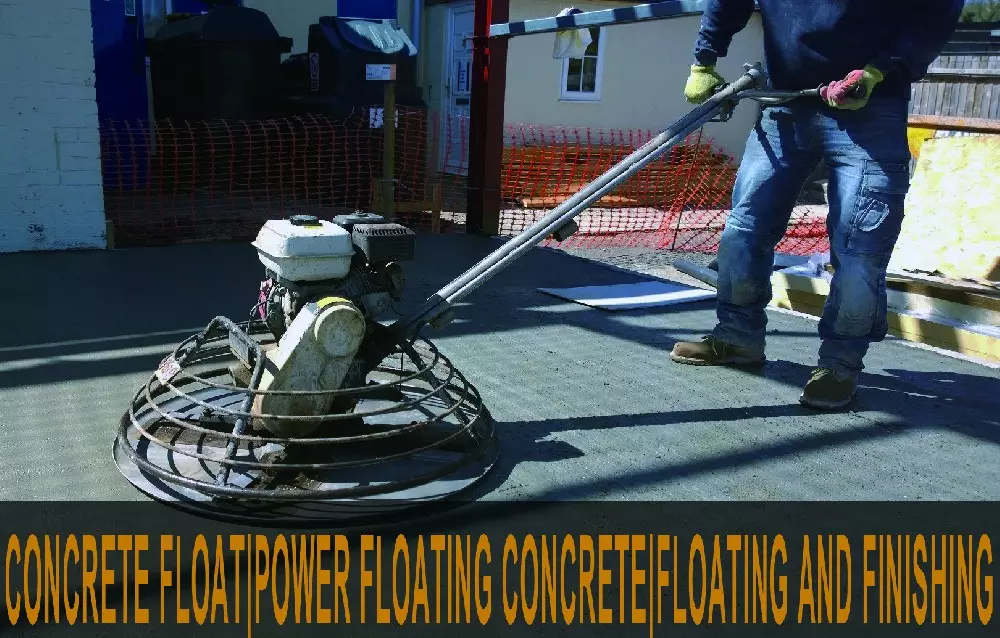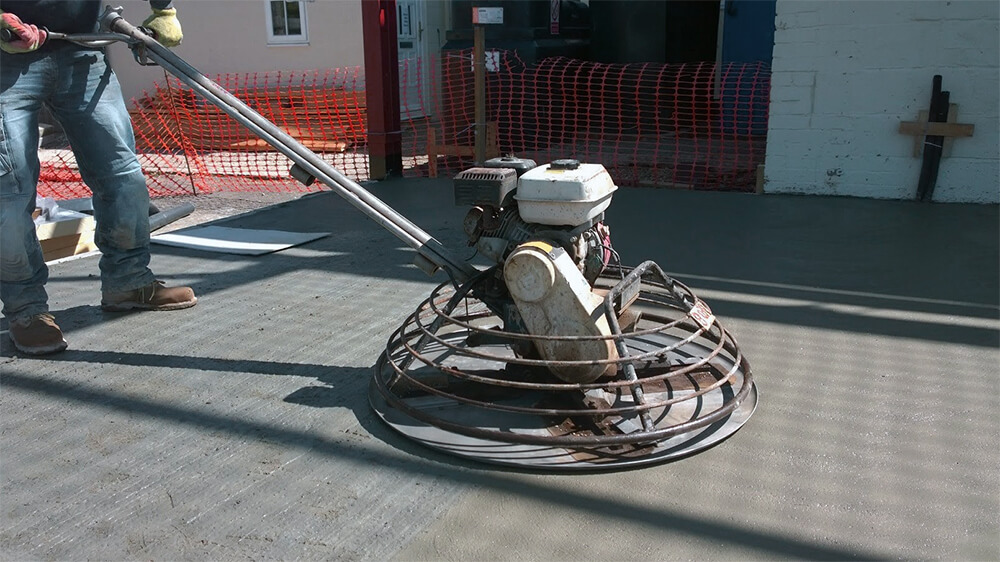26Nov 2022
table of contents

Concrete floats are tools used to smooth concrete surfaces. After leveling the surface with the screed, use the concrete float. In addition to removing surface imperfections, Concrete floats also compacts the concrete, preparing it for subsequent stages.
Concrete floats come in many shapes and sizes, from small hand tools for small jobs, a larger long-handled bull float, or an engine-driven power trowel (also known as a power float). And large industrial versions for commercial use on larger construction projects. To level uneven surfaces or rough patches on smooth concrete floors.
Power floating concrete is a process applied to freshly laid concrete to provide a flat and smooth surface, powered by electric or petrol. Rough concrete surfaces may pose challenges for maintenance due to the presence of tiny indentations and protrusions that complicate thorough cleaning. The smooth, shiny appearance achieved through power floated concrete resolves these issues, providing a concrete floor that is simple to maintain and clean.
Power floating concrete eliminates the need to trim the screed and is a more efficient, labor-intensive procedure than hand troweling.
Power Floating concrete will make the concrete surface flatter and smoother, but it will also make the surface denser. This means the surface will last longer, be more attractive and be easier to maintain.
Therefore, powered floating concrete is ideal for manufacturing or commercial environments where a hard and aesthetically pleasing floor is required. Such as warehouses, commercial centers, factories, airports, parking lots, etc.

Timing is of the essence when power floating concrete.
If the surface is too dry, the machine will find it difficult to remove the high spots and the floor will not be able to reabsorb the cement particles. Too wet and the machine will just tear the surface to shreds. The concrete must be allowed to partially set, leveled and compacted prior to dynamic flotation. The setup time required before the power supply floats depends on variables such as: air temperature, humidity, mix specifications, etc.
You have to wait until the surface is dry enough for a person to walk on, but wet enough to leave a 3 to 5mm footprint.
Power floating itself consists of two stages: floating and finishing. Special blades are used for each different stage.
In the floating stage, the machine is equipped with floating blades which are set at flat angles to create a suction effect on the concrete surface. The machine then moves up and down the ground, leaving a series of circular marks on the floor. At this stage, circular marks will remain on the surface. These should not be light marks and will be removed in the second stage. The float should go over any kind of work to make sure the seam is level.
If using a walk-behind machine, the operator should walk backwards to eliminate footprints.
We had to wait until the concrete had dried further to finishing stage until walking on the surface would leave no footprints. Finishing insert mounted on power float.
power floating concrete finishing
The finishing is a series of passes across the floor in which the angle of the blade gradually increases. Increase the angle after each pass - approximately 5-10° angle; the more angled the blade, the harder the surface. Finishing may require multiple uses of the dressing insert until the specified smoothness and hardness are achieved.
Concrete floors now need curing, which usually takes a month or so.
Power floating or power troweled concrete is not the same as polished concrete. Polishing concrete begins with a power finishing trowel and proceeds through a polishing process that may include as many as seven separate diamond polishing stages interspersed with thickener and sealer applications. As a result, a highly polished, thick, hard wearing and highly reflective floor surface is created.
Polished concrete can be treated with various diamond grades to provide a look from a "salt and pepper" look to a highly polished "super or premium" look or anything in between.
Floating the concrete after the slotting and trimming is complete. Float removes edge marks and brings the surface closer to a smooth finish. You may need to press harder on the float if the concrete starts to harden.
Concrete floats have a wider base than the trowel and are usually made of plastic, sponge, rubber, wood, or magnesium (a light gray metal). It is used to level the surface of plaster or concrete, making it stronger and imparting any desired texture. Finish will be determined by the float selected.
smooth and polished surface
One of the greatest benefits of power float concrete is its aesthetically pleasing finish. Powerful flotation creates a smooth polish that gives your floors an alluring brilliance. This
durable
Power floating concrete can withstand the weight of heavy machinery such as forklifts extremely efficiently and is ideal for industrial floors. Not only is the compacted surface lightweight, but the smooth surface is highly water-resistant, allowing spills to be wiped off with ease, keeping your concrete floors looking longer.
Anti-crack
Plastic shrinkage and cracks, possibly caused by the concrete drying too quickly, close together again as the action of dynamic flotation essentially recompacts the concrete floor. A smooth finish also means that concrete floors are less likely to crack in the future.
Clean
Concrete floors with a strong float finish create a highly compacted, dense surface that eliminates the dust problems that often occur with unfinished concrete floors.
inquiry form here
BISON BLOG, All the latest news and views from Bison Machinery.
Related Articles
Concrete float|Power floating concrete|Floating and finishingRelated Products